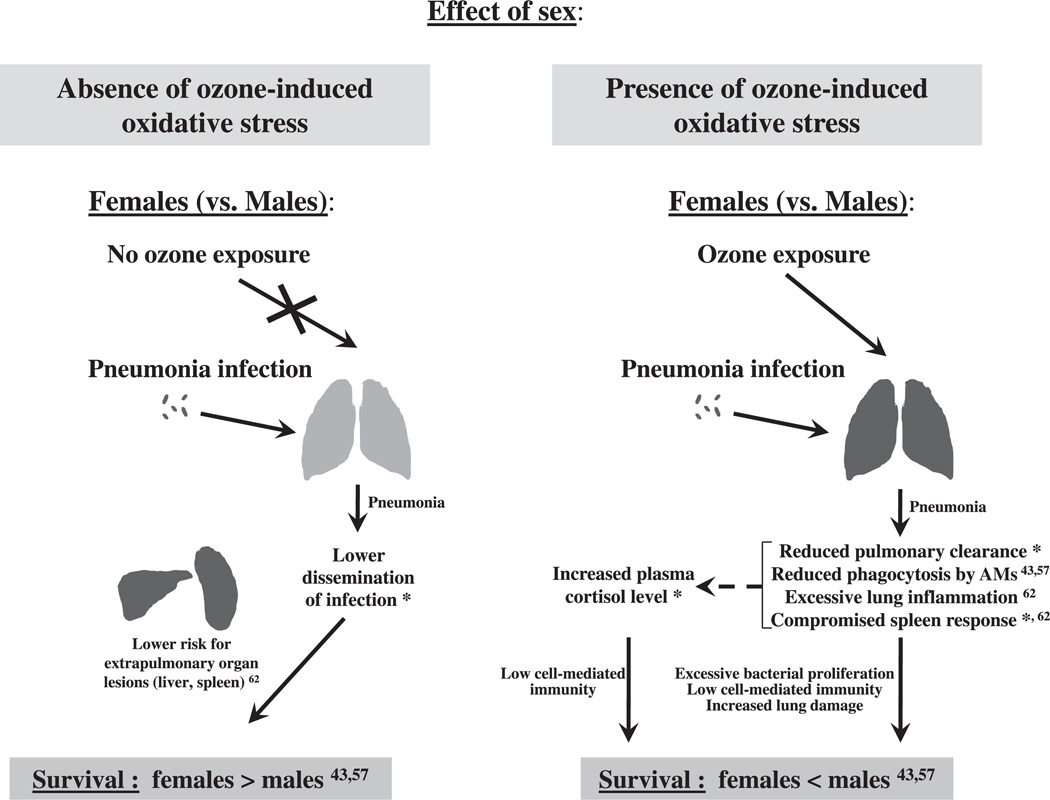Fig. 7.
Overview of the effect of sex on the outcome of pneumonia. The effect of sex on mouse survival after pneumonia in the presence or absence of ozone-induced oxidative stress is shown diagrammatically. We have observed previously that FA-exposed females exhibited a higher survival than FA-exposed males but ozone-exposed females showed a lower survival than ozone-exposed males after pneumonia [43,57], indicating that different mechanisms may be involved. Indeed, in the absence of ozone-induced oxidative stress, decreased dissemination of lung infection in FA-exposed females (this study*) may result in a lower risk for extrapulmonary organ lesions compared to FA-exposed male mice [62]. This, in turn, may account for a higher survival in FA-exposed females after pneumonia compared to FA-exposed males (FA: females > males) [43,57]. However, in the presence of ozone-induced oxidative stress, reduced pulmonary clearance (this study*), reduced level of in vivo phagocytosis by alveolar macrophages [43,57], excessive lung inflammation [62], a compromised spleen response to the infection (this study*), and increased plasma cortisol level (this study*) in ozone-exposed females may account for their lower survival after pneumonia compared to ozone-exposed males (ozone: females < males) [43,57].

